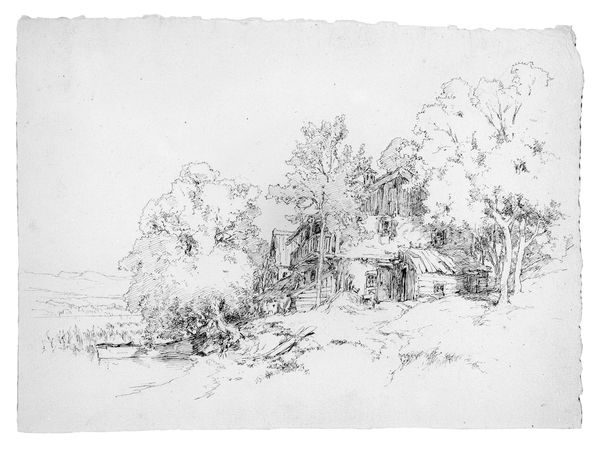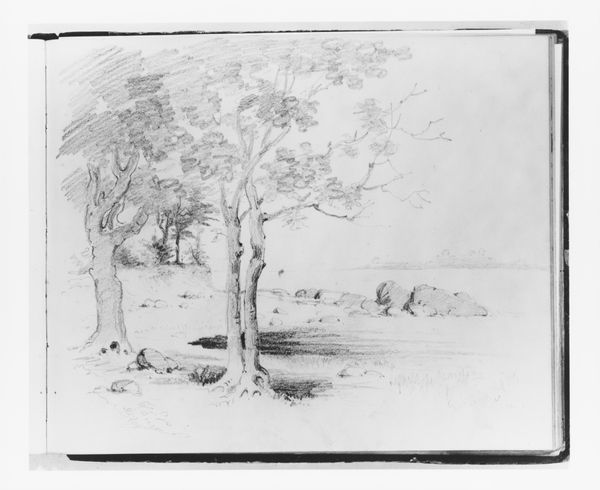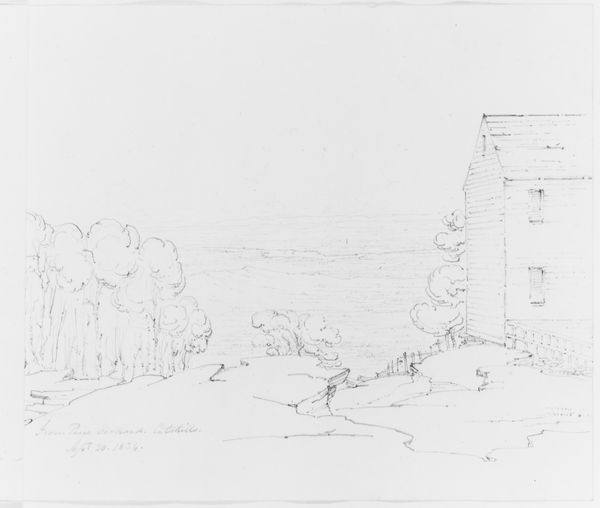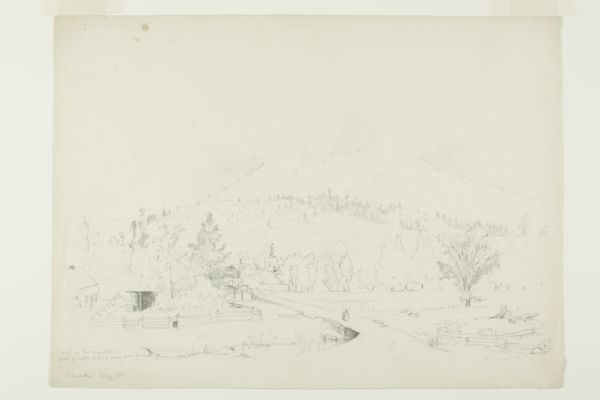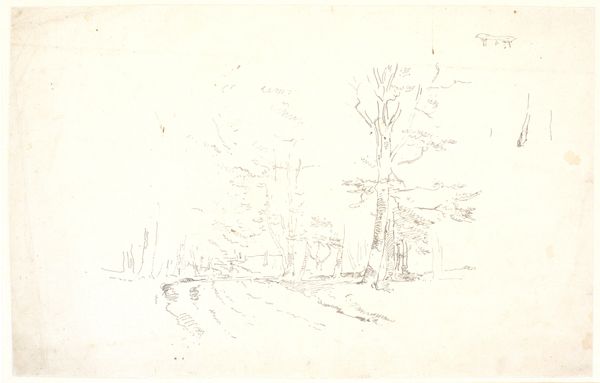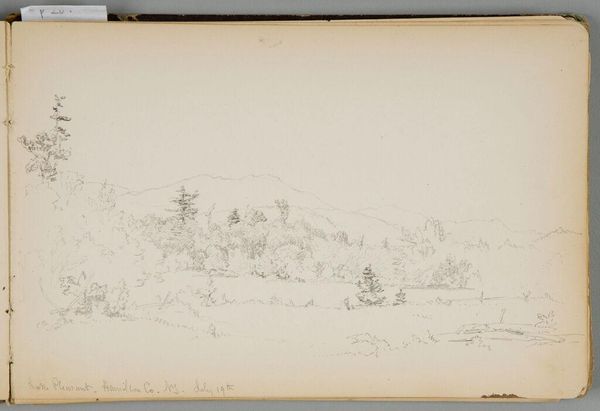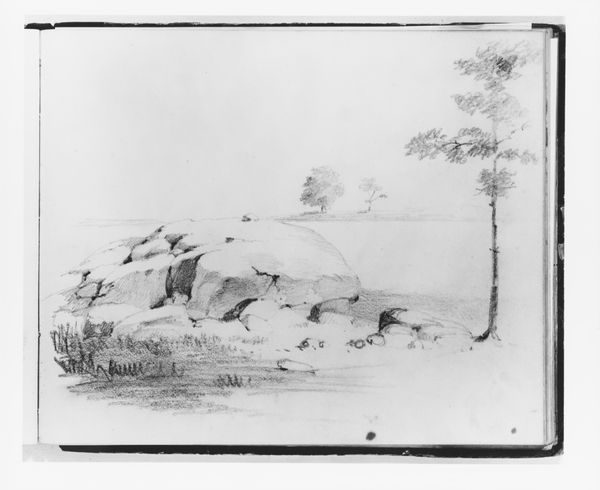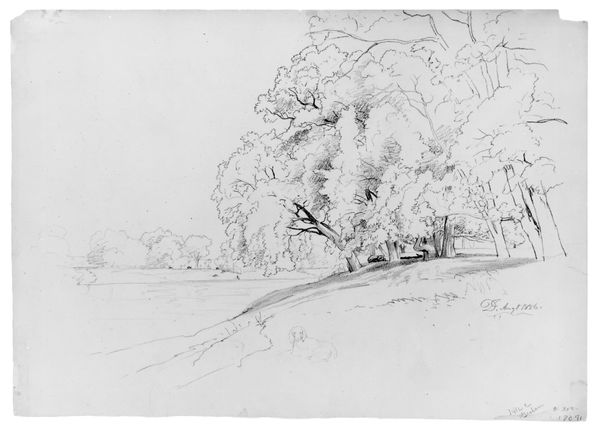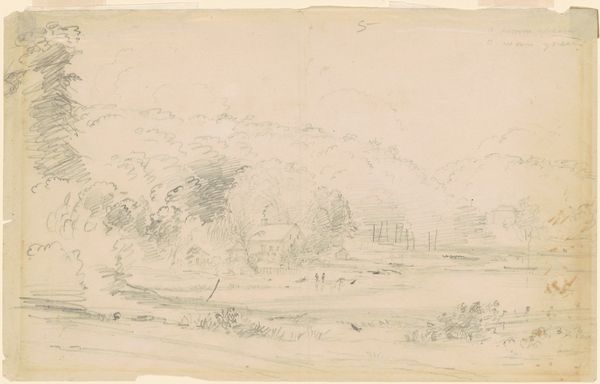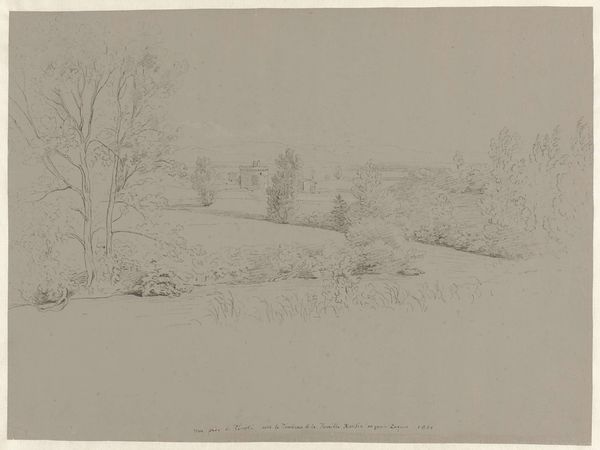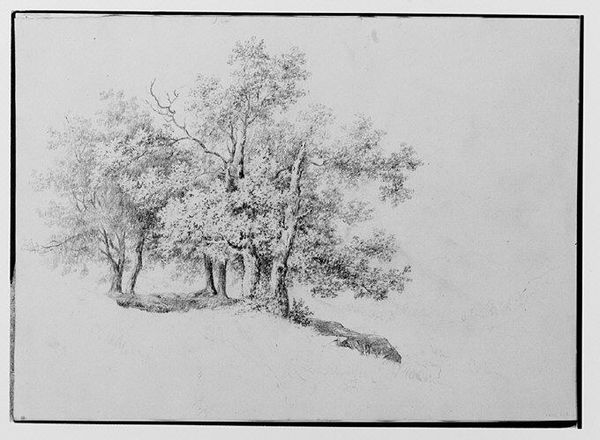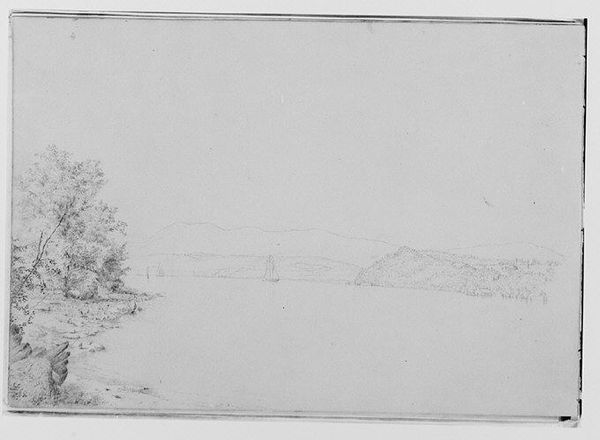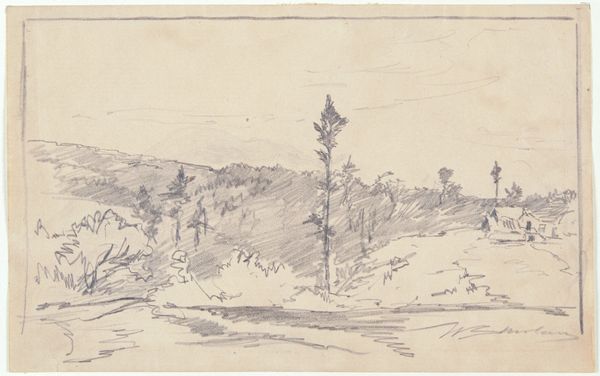
Head of Lake George (from Sketchbook) 1834 - 1838
0:00
0:00
drawing, ink, pencil
#
tree
#
drawing
#
lake
#
natural shape and form
#
thin stroke sketch
#
incomplete sketchy
#
landscape
#
organic drawing style
#
ink
#
ink drawing experimentation
#
pencil
#
thin linework
#
rough sketch
#
hudson-river-school
#
line
#
branching
#
natural form
#
realism
#
initial sketch
Dimensions: 7 1/4 x 9 in. (18.4 x 22.9 cm)
Copyright: Public Domain
Curator: Take a moment to observe John William Casilear’s ink and graphite drawing, “Head of Lake George,” created between 1834 and 1838. Editor: There’s an immediacy here, isn't there? A captured breath of nature, barely tethered to the page. It feels less like a formal composition and more like a fleeting memory, or a love note jotted down while in the throes of inspiration. Curator: Indeed. As a product of the Hudson River School, it reflects a specific cultural and economic interest in landscape. Think about the emerging tourism industry at the time and the romanticizing of untouched nature. Sketchbooks such as this played a vital role. Editor: Right! Like a rough draft of a sublime experience that only the monied class got to witness, package, and then consume from afar, like a fancy flavored ice cream? I appreciate how raw it is though. You see the artist grappling with form, not just churning out a pretty picture for some robber baron. Curator: The pencil and ink wash medium lends itself well to that rawness, doesn’t it? Notice how the delicate lines create a sense of depth and atmosphere with minimal material. It shows a study of light and shadow and an economic use of the page’s surface as material support. Editor: Exactly. And while Casilear likely intended it as a study, for me, it's pregnant with a melancholy... a foreshadowing of what's been lost, really, when pristine nature morphs into vacation property. Curator: You could say his preparatory studies unwittingly chronicled a transformation of the landscape, both literally and in its cultural significance. Editor: Absolutely. It makes me think about art as a historical document of labor as well, the commodification of landscapes and leisure, rendered with delicate tools like graphite that conceal these social transformations behind deceptively pastoral visions. Curator: An insightful reading. It's fascinating how a seemingly simple sketch can reveal so much about artistic practice, and its place in wider socio-economic currents of its era. Editor: Makes you realize that everything's connected, right? A simple drawing reveals these bigger stories... it gives you shivers!
Comments
No comments
Be the first to comment and join the conversation on the ultimate creative platform.
